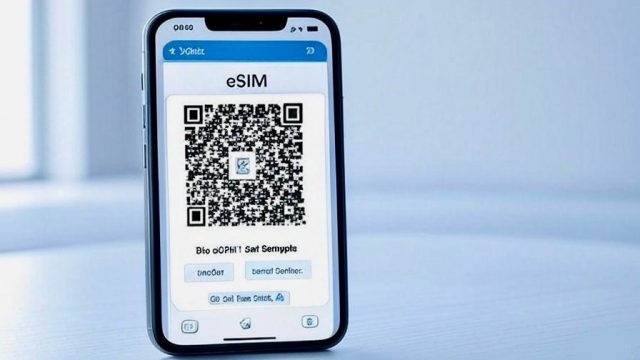To be honest, technology is great until it malfunctions. Additionally, the development of embedded SIMs, or eSIMs, has given us additional options for connecting to mobile networks. Eliminate the need to replace or misplace small plastic SIM cards. As an alternative, you can switch carriers, activate data plans, and travel overseas without tinkering with hardware.
No technology is perfect, of course. Whether you’ve just switched to an eSIM or you use your phone to manage multiple profiles, you might occasionally encounter issues. Don’t worry, you’re not alone. You don’t need to be a tech whiz to follow these simple steps to troubleshoot common eSIM issues.
Table of Contents
Why Even Attempt to Troubleshoot eSIM Issues?
In actuality, eSIMs are designed to simplify your life while you’re on the go. They offer:
- Convenience: SIM tray pins are no longer used!
- Flexibility: Use one gadget for multiple plans.
- Security: It is harder to steal or duplicate them.
Your entire day could be disrupted, though, if something goes wrong, like losing signal, not receiving the activation code, or being in roaming limbo. Imagine missing important calls, emails, or messages due to a malfunctioning eSIM. Or worse, being abroad and unable to connect to a local carrier.
Therefore, it is crucial to understand how to solve these issues. You can stay away from customer service. Save time and stress by holding music all the way through.
1. eSIM Are You Experiencing Network Connectivity Issues? Try These Fixes
Perhaps the most common problem is that your eSIM isn’t connecting to your mobile network. Before you panic, let’s make a few quick checks.
Methodical Resolution:
- Restart your gadget: It may seem easy, but it often works.
- Check Your Signal’s Strength: Are you in a rural area, underground, or inside a structure with high walls? Consider going outside.
- Switch Network Modes: Verify that your phone is in the proper mode (for example, 4G or 5G). You can change this in the settings.
- Verify Activation: Make sure your eSIM was activated and your carrier settings were installed correctly.
- Update your device’s software: An outdated system may have an impact on eSIM’s functionality.
- Check for Compatibility: Not all devices are compatible with eSIM. Make sure yours is compatible with your carrier’s network bands.
2. Are You Having Trouble Getting Your eSIM to Activate?
If you’ve been watching your screen for a QR code that never shows up, you’re not alone.
Common Errors in Activation:
- The QR Code Is Not Visible Email: Check your spam or junk mail folder.
- False Activation Details: Serious repercussions can result from even a small code error.
- Blocked Scanning: Some browsers and camera apps might not be able to recognise the QR code.
Things You Can Do:
- Check the email source once more: Make sure it’s from your carrier and is safe.
- By hand Enter the following details: Most eSIMs let you manually enter settings if the QR code doesn’t work.
- Consult your carrier: If nothing else fixes the problem, call or chat with customer service. They can either resend the QR code or walk you through it.
3. Having Issues Configuring Two SIMs? This Is the Fix
One of the best features of eSIM is the ability to use multiple phone numbers or data plans on a single device. However, if you’re experiencing difficulties switching between profiles, follow these steps:
Advice for Troubleshooting:
- Make sure the configuration is correct: Each eSIM needs to be fully set up and activated.
- Check to See If Your Device Can Accept Two SIM Cards: Not all phones support two active SIMs (physical + eSIM or eSIM + eSIM).
- Set Priorities: Usually, you can select a default SIM for data, calls, and texts in your settings.
- Track the Use of Data: Some phones let you set limits for each eSIM so you don’t accidentally use the wrong plan.
4. Are You Experiencing Issues With Your eSIM Profile? Let’s Clean That Up
Your eSIM profile is essentially a digital version of your SIM card. If it is not set up properly, you will encounter problems.
Simple Fixes:
- Check the details once more: Make sure that every field is correctly filled in, including the activation code and carrier information.
- Remove and Reinstall: If the profile looks corrupt, remove it and reinstall it using the original QR code or manual setup.
- Request Assistance: If the problem persists, your carrier may need to issue a new profile or correct an error on their end.
5. Is Roaming on eSIM Not Working? Before You Leave, Do These Things
Will you be using your eSIM abroad? Great idea—no more searching the area for SIM cards! But roaming doesn’t always launch without issues.
Roaming Fixes:
- Check the roaming configurations: Check your network settings to make sure roaming is enabled.
- Check for Carrier Support: Not all carriers offer eSIM roaming. Give them a call before you depart.
- By hand Select a Network: In certain places, automatic network selection may not function. Choose one by hand in the settings.
- Check for Compatibility: Your device should be compatible with the frequency bands used in the country you are visiting.
FAQs: Common Questions About Troubleshooting eSIM
Q1: What should I try first if my eSIM isn’t functioning?
A: To start, check the signal strength, restart your device, and confirm that your eSIM is properly activated. These are the simplest and most effective initial actions.
Q2: I never got the QR code to activate my eSIM. What comes next?
A: Check your spam folder. If it hasn’t arrived yet, ask your carrier to send it again. Some carriers also allow you to manually enter setup data.
Q3: Can two eSIMs be used at the same time?
A: That will depend on your device. Some modern phones allow two eSIMs, while others only support one physical SIM and one eSIM. Look over your phone’s specifications.
Q4: Is using an eSIM safe?
A: It is safer than a physical SIM in many ways because it is harder to steal or tamper with. Just confirm that your device settings and eSIM are secure and up to date.
Q5: My eSIM works fine at home but not abroad. Why?
A: That’s most likely due to a roaming problem. Make sure your device is compatible with the networks of the nation you are visiting, that roaming is enabled, and that your carrier permits it.
To Sum Up
eSIMs are revolutionising how we stay connected, whether for business, travel, or just to make our digital lives easier. Like any other technology, they do have some disadvantages, though.
By understanding the most common issues and learning how to resolve them yourself, you can keep your device operating without interruption. Whether it’s a network glitch, a setup error, or a roaming annoyance, the fixes are often just a few taps away.




